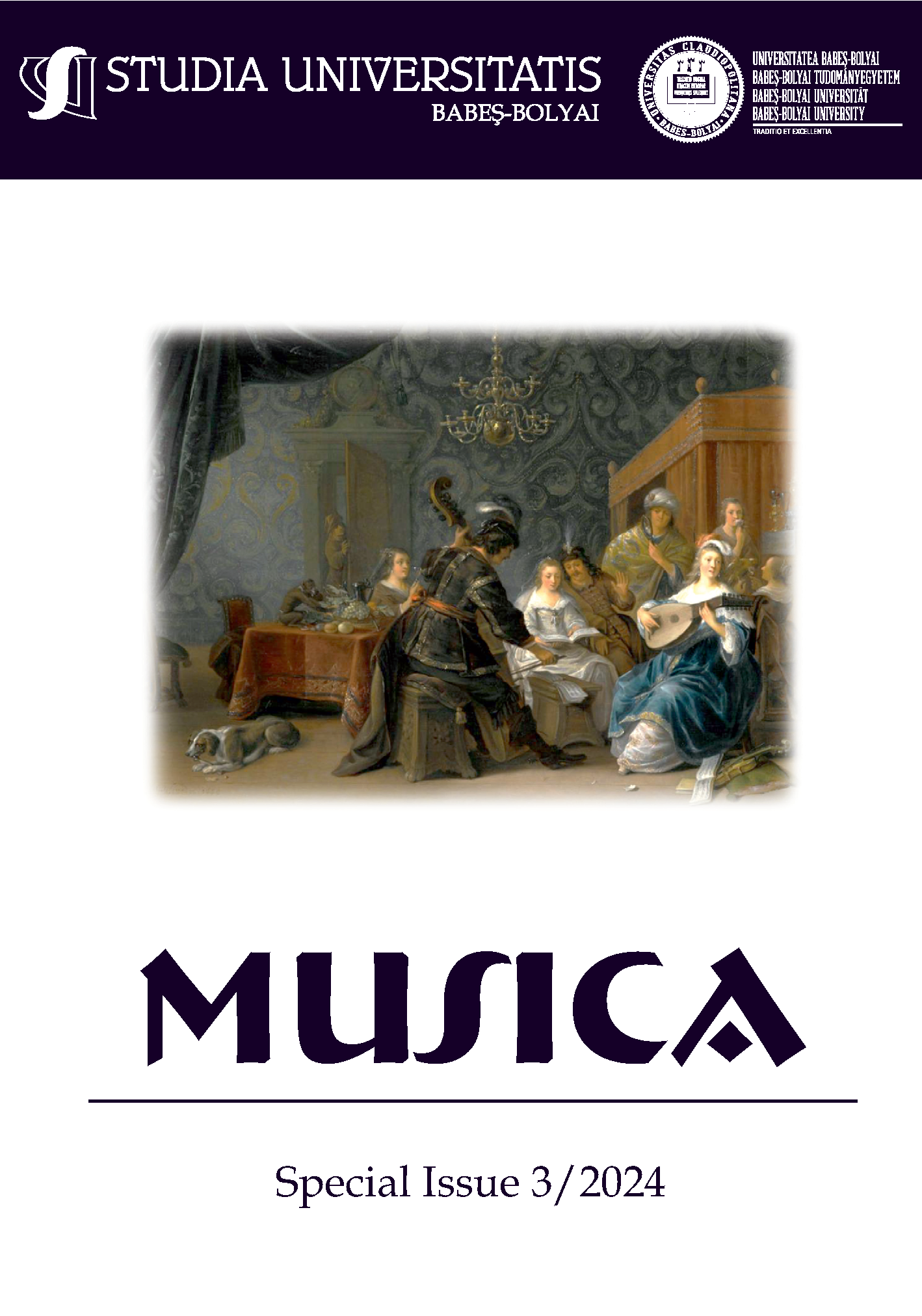Reconceptualizing Musical Temporality: The Infinite Sound and Perpetual Motion in Ligeti’s Continuum
DOI:
https://doi.org/10.24193/subbmusica.2024.spiss3.09Keywords:
Ligeti, Continuum, harpsichord, sound colors, modern performance, analysisAbstract
Through making a major contribution to the evolution in contemporary music, György Ligeti has become recognized as one of the most innovative composers of the twentieth century. Ligeti, whose work is renowned for his uncompromising examination of new textures and sound forms, became accomplished at pushing the boundaries of traditional composition through the inclusion of techniques such as micropolyphony and structured rhythms that made music more intricate. Ligeti explored dense layers of sound in his songs, which culminated in works of music that comes extremely close to being a tactile listening experience. Throughout the time that Ligeti looked for fresh sources of inspiration and unconventional timbres, he contributed to the discovery of the harpsichord during this time. Composing works such as “Continuum,” in which the harpsichord is used to generate the sensation of continuous motion and musical infinity, he was fascinated by the instrument’s capacity to produce a variety of sound colors via clear and repetitive attacking techniques. Due to this, Ligeti managed to not only revive interests in the harpsichord in modern music but also showcase how a standard instrument can be converted into a vehicle to express the avant-garde in the realm of music.
References
Chelsea, Douglas; Noble, Jason; McAdams, Stephen. “Auditory Scene Analysis and the Perception of Sound Mass in Ligeti’s Continuum” In Music Perception, 33, 3, 2015, pp. 287-305.
Hicks, Michael. “Interval and Form in Ligeti’s Continuum and Coulée” In Perspectives of New Music, 31, 1993, pp. 172-190.
Ligeti, György, Varnai, Péter, Häusler, Joseph. Ligeti in Conversation. Ed. Eulenburg Books, London, 1983.
Piper, Clendinning, Jane. “The Pattern-Meccanico Compositions of György Ligeti” In Perspectives of New Music, 31, 1, 1993, pp. 192-234.
Searby, Mike. “Ligeti the Postmodernist?” In Tempo, New Series, 199, 1997, pp. 9-14.
Stockhausen, Karlheinz; Maconie, Robin. Stockhausen on Music: lectures and interviews, Ed. Marion Boyars Publishers Ltd., London, 1989.
Web sources
György Ligeti, Hungarian- Avant – Garde Composer, https://www.britannica.com/biography/Gyorgy-Ligeti (11.09.2024)
György Ligeti: Continuum (1968) / Joyce Chen, harpsichord, https://youtu.be/zRItK87Cn2s?si=qWT_iZ1heNMCCxgb (11.09.2024)
Downloads
Published
How to Cite
Issue
Section
License
Copyright (c) 2024 Studia Universitatis Babeș-Bolyai Musica

This work is licensed under a Creative Commons Attribution-NonCommercial-NoDerivatives 4.0 International License.



